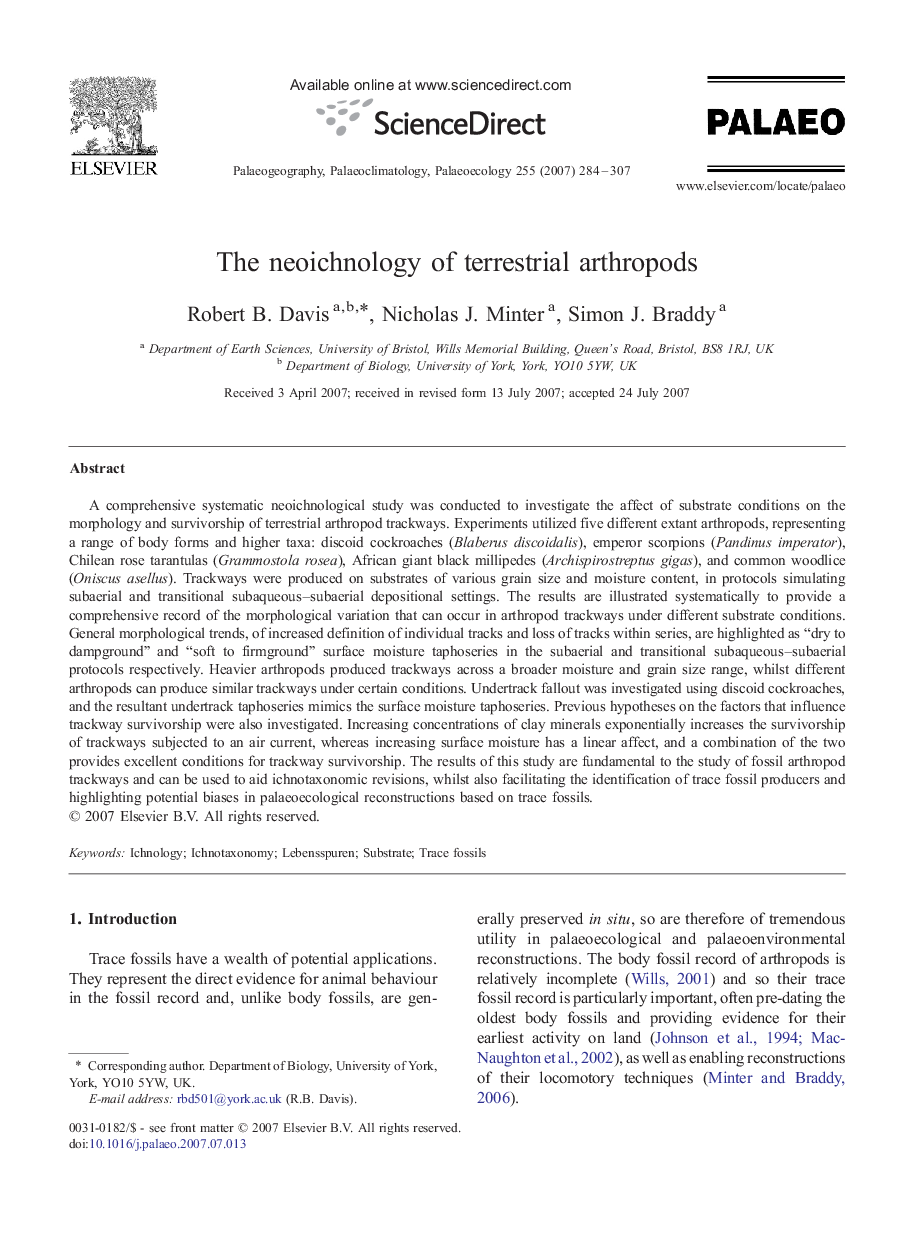| Article ID | Journal | Published Year | Pages | File Type |
|---|---|---|---|---|
| 4468663 | Palaeogeography, Palaeoclimatology, Palaeoecology | 2007 | 24 Pages |
A comprehensive systematic neoichnological study was conducted to investigate the affect of substrate conditions on the morphology and survivorship of terrestrial arthropod trackways. Experiments utilized five different extant arthropods, representing a range of body forms and higher taxa: discoid cockroaches (Blaberus discoidalis), emperor scorpions (Pandinus imperator), Chilean rose tarantulas (Grammostola rosea), African giant black millipedes (Archispirostreptus gigas), and common woodlice (Oniscus asellus). Trackways were produced on substrates of various grain size and moisture content, in protocols simulating subaerial and transitional subaqueous–subaerial depositional settings. The results are illustrated systematically to provide a comprehensive record of the morphological variation that can occur in arthropod trackways under different substrate conditions. General morphological trends, of increased definition of individual tracks and loss of tracks within series, are highlighted as “dry to dampground” and “soft to firmground” surface moisture taphoseries in the subaerial and transitional subaqueous–subaerial protocols respectively. Heavier arthropods produced trackways across a broader moisture and grain size range, whilst different arthropods can produce similar trackways under certain conditions. Undertrack fallout was investigated using discoid cockroaches, and the resultant undertrack taphoseries mimics the surface moisture taphoseries. Previous hypotheses on the factors that influence trackway survivorship were also investigated. Increasing concentrations of clay minerals exponentially increases the survivorship of trackways subjected to an air current, whereas increasing surface moisture has a linear affect, and a combination of the two provides excellent conditions for trackway survivorship. The results of this study are fundamental to the study of fossil arthropod trackways and can be used to aid ichnotaxonomic revisions, whilst also facilitating the identification of trace fossil producers and highlighting potential biases in palaeoecological reconstructions based on trace fossils.
